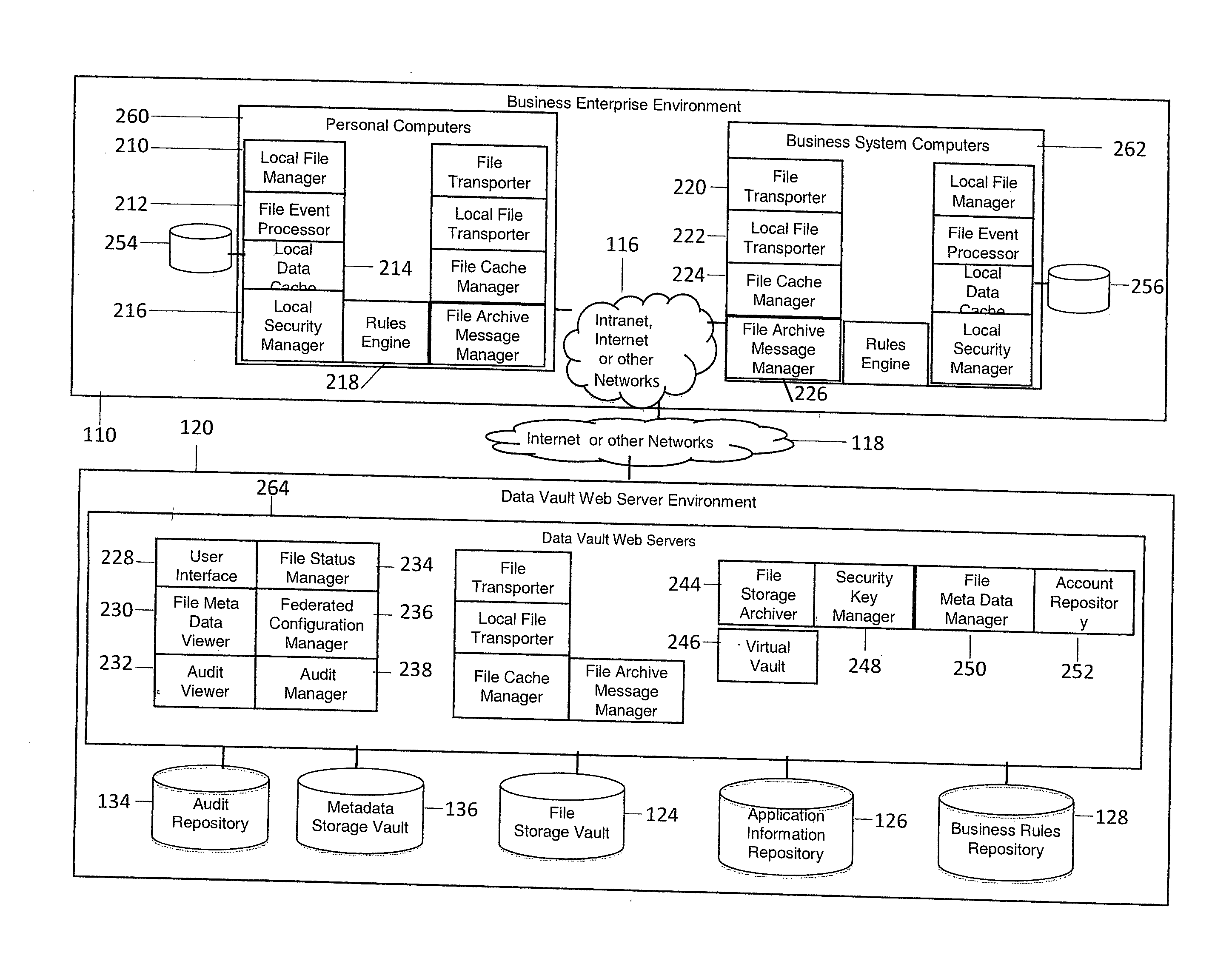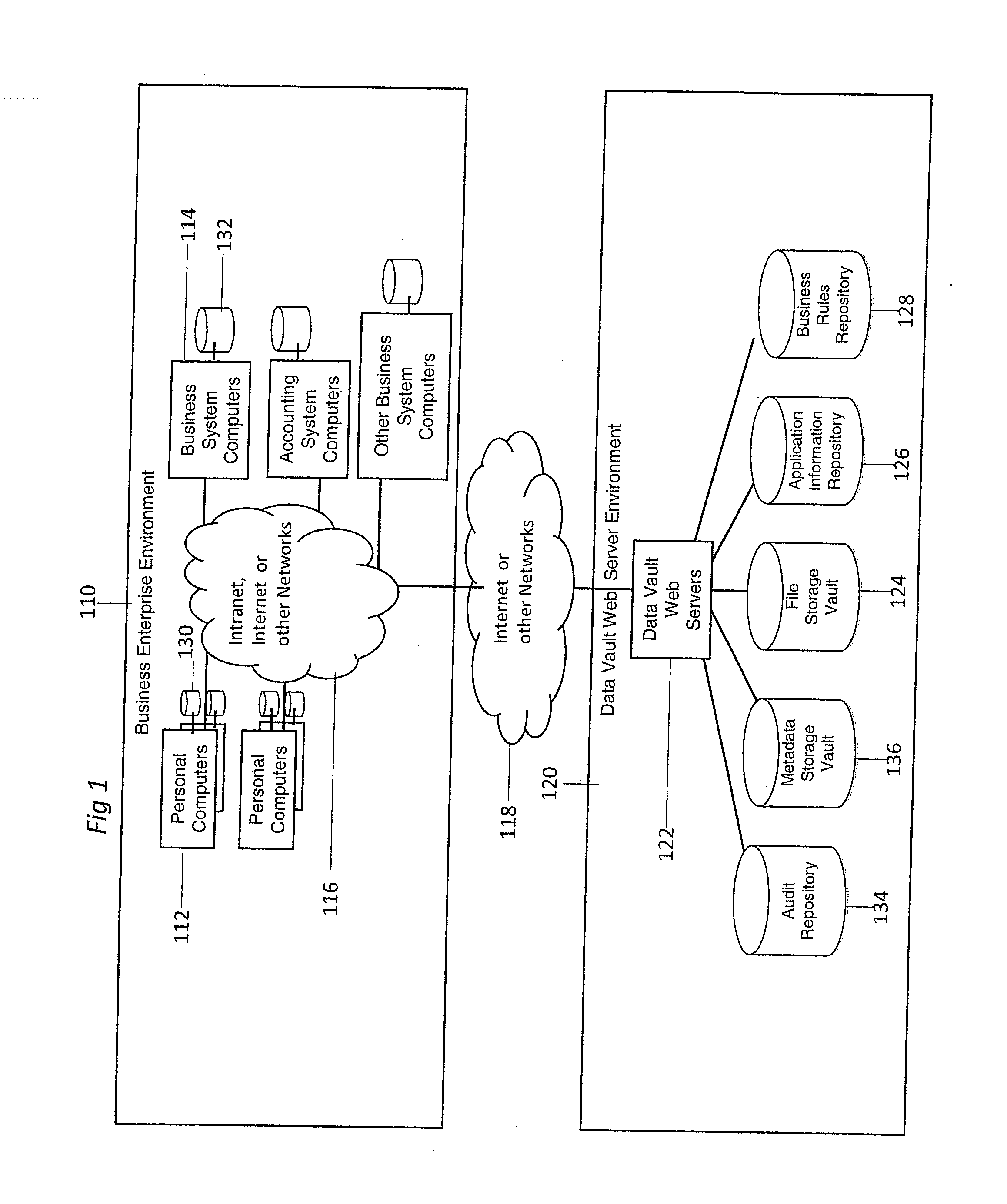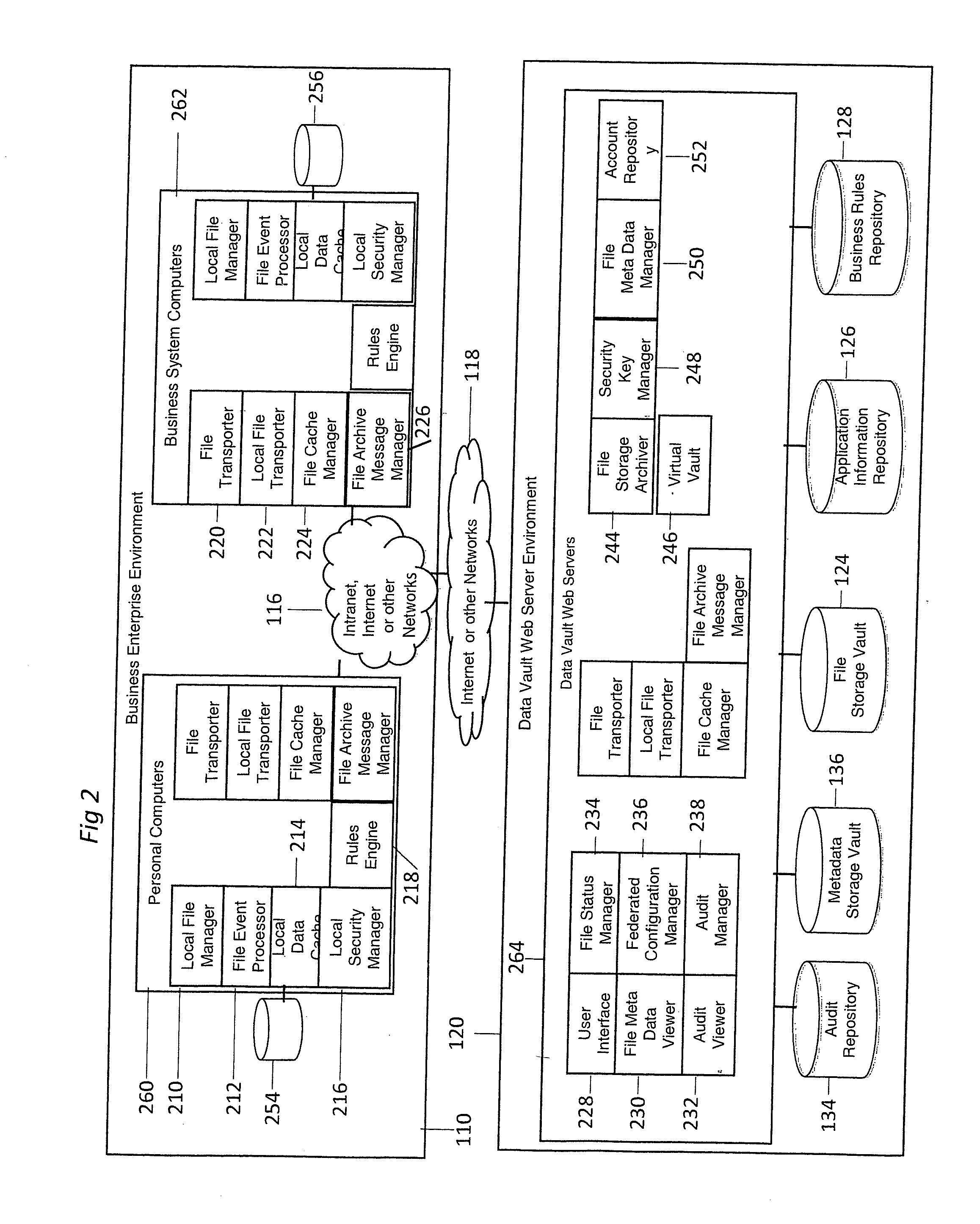System and method for providing automated electronic information backup, storage and recovery
a technology of electronic information and backup repository, applied in the field of data backup and retrieval, can solve the problems of not having self-learning mechanisms that can be applied to conventional backup techniques, unable to select and optimize the data that needs to be backed up, and providing little or no automated help in determining. redundancy of data stored in the backup repository is avoided
- Summary
- Abstract
- Description
- Claims
- Application Information
AI Technical Summary
Benefits of technology
Problems solved by technology
Method used
Image
Examples
Embodiment Construction
[0054]Embodiments of the present invention provide a system and method for enterprise data backup, migration, and recovery through a three-phase process that includes:
[0055]1. Discovery
[0056]2. Backup (or observation)
[0057]3. Recovery (or migration)
[0058]The discovery phase facilitates the enterprise in knowing the totality of its data complexity and data backup needs.
[0059]The backup, migration, and recovery system according to embodiments of the present invention discovers an enterprise's data backup needs through a combination of automated discovery of file events; the mapping of these file events to applications; and both automated and manual methods for deciding which file events are significant and therefore should lead to the setting up of business rules to facilitate the automated backup of the relevant data.
[0060]According to one embodiment, the system employs three main mechanisms during the discovery phase:
[0061]1. File event monitoring and application mapping
[0062]2. Fil...
PUM
 Login to View More
Login to View More Abstract
Description
Claims
Application Information
 Login to View More
Login to View More - R&D
- Intellectual Property
- Life Sciences
- Materials
- Tech Scout
- Unparalleled Data Quality
- Higher Quality Content
- 60% Fewer Hallucinations
Browse by: Latest US Patents, China's latest patents, Technical Efficacy Thesaurus, Application Domain, Technology Topic, Popular Technical Reports.
© 2025 PatSnap. All rights reserved.Legal|Privacy policy|Modern Slavery Act Transparency Statement|Sitemap|About US| Contact US: help@patsnap.com



